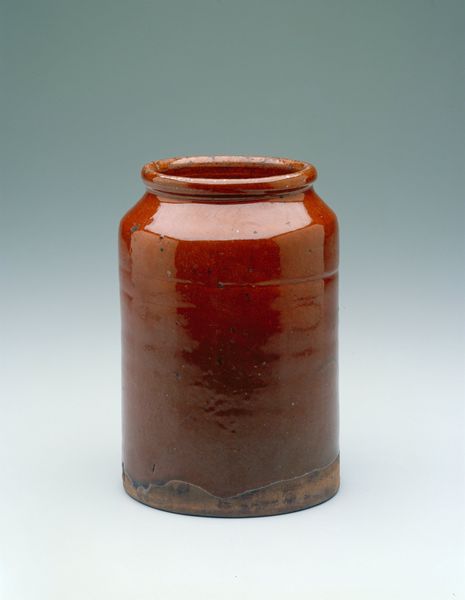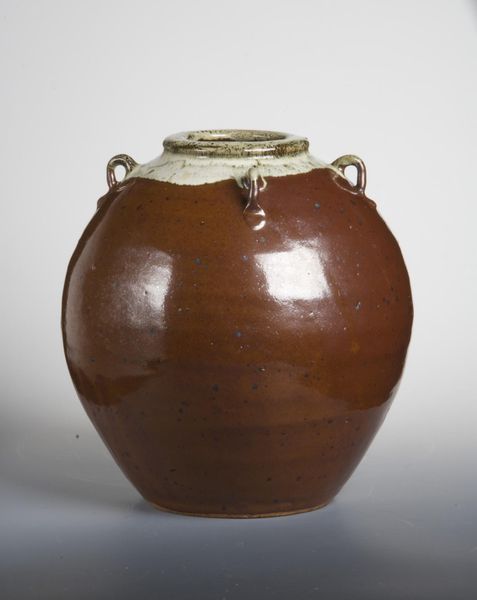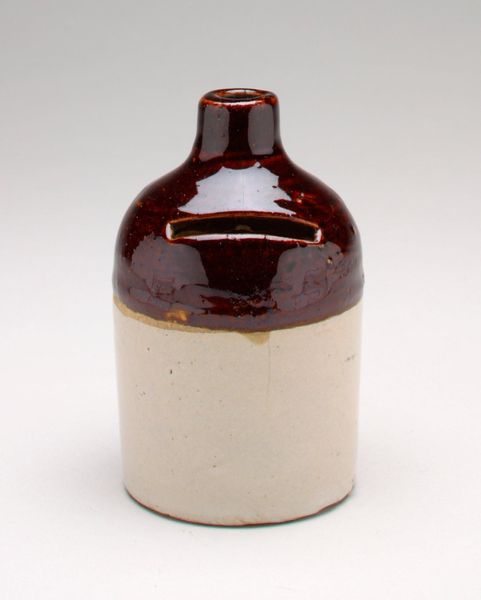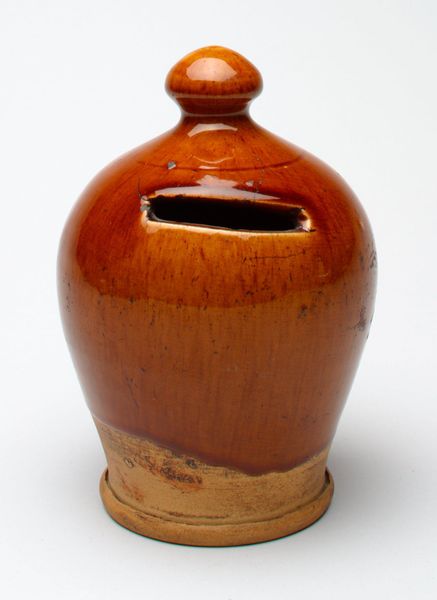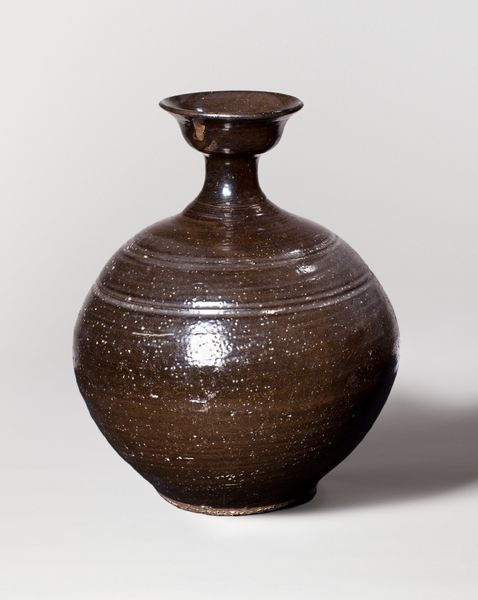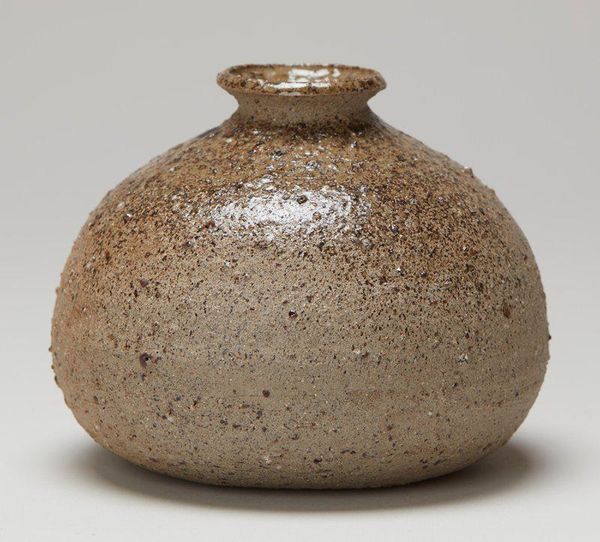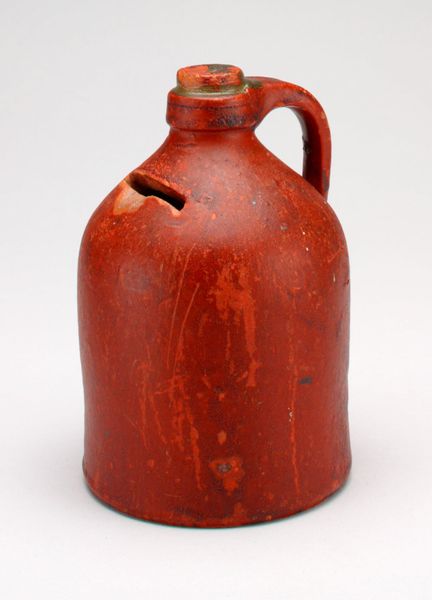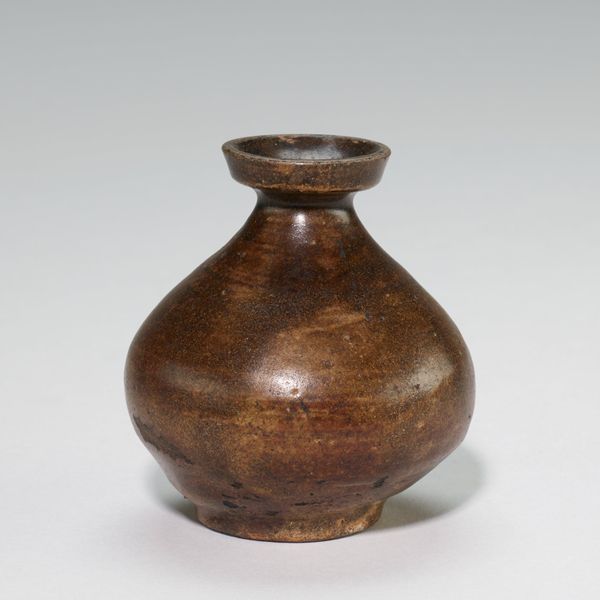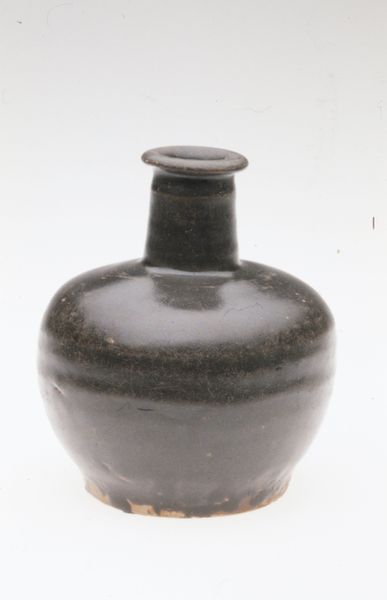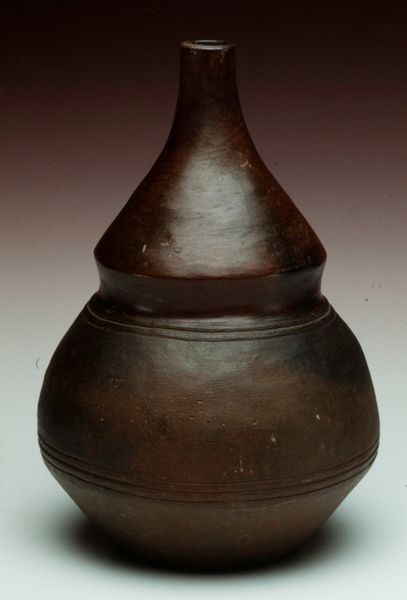
ceramic
#
ceramic
Dimensions: 4 1/2 x 2 1/2 x 2 1/2 in. (11.43 x 6.35 x 6.35 cm)
Copyright: Public Domain
Curator: Looking at this simple object, it almost vibrates with an earthy, grounded presence. I’m immediately struck by the contrast between the warm, mottled brown of the glaze and the coolness of its functional shape. There's a real weightiness here. Editor: This is a ceramic "Bottle still bank," dating to around 1820. It’s currently part of the collection at the Minneapolis Institute of Art, although its maker remains anonymous. When we think of a “bank,” especially in this era, we can consider this form, in relation to questions of access to wealth, and how marginalized communities could both access and create alternate monetary systems in a period that was intensely exclusionary. Curator: Exclusivity—it’s baked into the concept itself, isn't it? Stashing away coins. What’s intriguing is the ‘still’ aspect...like freezing a moment. I imagine someone, a child perhaps, carefully slipping a hard-earned penny into that narrow slot, the satisfaction of deferred gratification...though of course you are pointing to something deeper. Editor: Absolutely. And think about the "still" aspect within the context of industrialization. Even as money might have felt scarce to ordinary people, new consumer goods were emerging and with them a drive toward both acquisition and personal investment in market economies. Curator: True, a child's treasure alongside this growing consumerism! Though I also keep landing on the utter simplicity. It's handmade, imperfections and all, yet embodies a very powerful desire: agency over one's own resources. And if we consider the artist's anonymity, might there be something about how art allows those to defy or transcend societal limitations? Editor: Absolutely. Anonymity invites us to question traditional notions of authorship and value, suggesting a democratization of art itself, placing focus back onto community traditions instead of individual identity and commercialisation. Moreover, if we look at the specific use of ceramics at that moment, we are urged to consider the tradition of marginalized artisans using this affordable medium to reclaim space and challenge class divides. Curator: It reframes everything—ownership, creativity, identity. Editor: It invites us to see it that way, yes. These unassuming objects often harbor incredibly rich stories about who we are, where we’ve been, and what we collectively value. Curator: I'll think twice now about dropping my spare change into a modern vending machine.
Comments
No comments
Be the first to comment and join the conversation on the ultimate creative platform.
